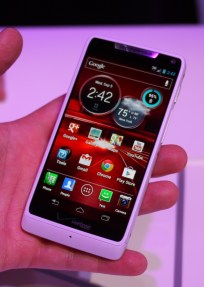In the industry we are all aware that when manufacturers, telcos and analysts wax lyrical about “4G” they don’t really mean “4G” at all – but LTE just doesn’t have the same cachet, immediacy or street cred.
So we use “4G” as short-hand and marketing-speak that is designed, in the final analysis, to attract the attention (and hard cash) of those trendy consumers who just have to be first with every new gizmo and technology and are thus prepared to stand-in-line for days and nights waiting to get their hands on the latest over-priced gadget – as we saw amply demonstrated yet again only last week.
However, to 99.999 per cent of us, the word “unlimited” has a real, solid meaning in just the same way as the word “plonker” does.
There are several definitions of “unlimited” dependent on which dictionary or thesaurus you might be reading but all agree that ‘unlimited’ means numberless, countless, measureless, inexhaustible, indefinite, without number, boundless, perpetual and endless, unrestricted, unconfined, unconditional, vast and without qualification or exception.
Pretty clear then, you might think, ah, but then you are not Francis J. (“Fran”) Shammo, the Chief Financial Officer of US telco, Verizon. Speaking on Thursday last at the Goldman Sachs “Communacopia Conference 2012” Mr. Shammo told his audience that when Verizon says “unlimited” it doesn’t mean ‘unlimited’ because ‘unlimited’ is “just a word” that “doesn’t really mean anything”.
It seems that as far as Verizon’s CFO is concerned, words that fail to chime with Verizon’s peculiar world view do not have any meaning, thus negating the universally accepted fact that what separates us from animals is our unique ability to use language to communicate with one another and work to achieve common goals.
Shammo is, of course, talking about data in general and mobile data in particular and is employing weasel words to justify Verizon’s determination to consign its so-called “unlimited” data tariffs to the dustbin of history.
Now, there may be perfectly valid commercial reasons to withdraw the “all you can eat and stuff down your trousers” offers that were made when mobile data traffic was in its infancy and telcos were desperate to monetise novel services, but Verizon won’t be brave and upfront about it and so is weaving an elaborate and deceptive rationale to persuade customers away from “unlimited” data packages and on to something else that will, of course, cost them more.
That’s why Fran Shammo said this, “What customers are understanding and through our good sales routine is once you explain to a customer their usage on a monthly basis, unlimited is just a word, it doesn’t really mean anything and that people don’t really – I think a lot of consumers think they consume a lot more data than they really do. That whole unlimited thing I think is going by the wayside and they see the benefit of going to the shared.”
Really? Evidence please.
According to the Shammo Doctrine, an ever-increasing number of subscribers are listening to (Verizon’s) argument and are ending their “unlimited” data packages to take up shared data services across and for multiple devices. If that’s the case, Phineas T. Barnum has be proved right yet again.
The reality is that Verizon subscribers upgrading to any new handset (including the iPhone 5) automatically come off their old “unlimited” contract and data plan and have to sign-up to a “shared” data traffic. In other word’s it’s Hobson’s choice for the US consumer and more money for Verizon.
The US mobile market is supposed to be competitive and, sure enough, the few Verizon customers who ignore the blandishments of the company’s salesmen and are prepared to soldier on with aging handsets or pay top dollar for new ones will, for now, stay on their existing ‘unlimited’ data plans – the ones that throttle the life out of them if they exceed what, by present standards and expectations, are ludicrously small data limits.
Some AT&T customers also retain ‘unlimited’ data rights while Sprint continues to offer ‘unlimited’ data plans and T-Mobile has announced the imminent introduction of “truly unlimited data services” – whatever than means.
So, Verizon subscribers, you can expect to be receiving a call from an ecstatic evangelical salesperson very soon determined to convert an unbeliever to the right way of thinking. If you can’t understand what’s being said it’ll be because he or she will be speaking in tongues, and “VerizonSpeak “like their CFO. In those circumstances the best thing to do is to hang-up, sharpish.
By the way I urge you to take a peek at the photograph of Fran Shammo on the Verizon website. It looks like he was snapped just as he learned the word “buffoon” doesn’t mean the same as “balloon” with the double ‘l’ swapped out for a double ‘f’. Tricky things, words, aren’t they? Change a few letters in one and it means something else altogether. Remarkable!












